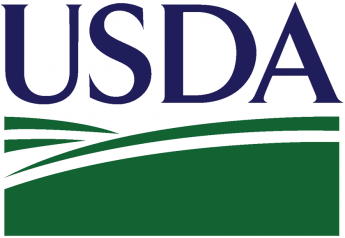Want to Plant Early Soybeans? Fix Ruts, Run Tillage Tools Now

With harvest completed in Illinois, post-harvest work is in full swing with farmers applying fertilizer, doing fall tillage and installing tile. Some areas are dry and soil conditions are perfect for the work being done, while in other areas growers are getting stuck trying to work out the ruts created with combines.
“I talked with one road commissioner the other day who said he’s tired of cleaning up mud off the roads, as these tractors move from one field to another,” says Ken Ferrie, Farm Journal Field Agronomist and owner of Crop-Tech Consulting, Heyworth, Ill.
When the proverbial dust settles, Ferrie believes it will be interesting to see how much fall anhydrous was applied throughout the state. Farmers who don’t normally apply anhydrous have this fall, because of concerns about escalating prices and the potential lack of fertilizer availability next spring.
“With all these acres covered in gas, it should take pressure off the spring liquid market,” he says.
Chisel Ruts This Fall To Ready For Planting
Illinois growers are grappling with how to address a combination of wheel tracks and ruts in fields—especially those who want to plant early soybeans.
“I talked with a grower the other day whose plan was to let fields dry out and then chisel them and level them next spring and plant his beans early. This may sound like a good plan, but that timing is going to be a little tough,” Ferrie says.
In central Illinois, early-season soybeans go into fields between the last week in March and the first three weeks of April. A lot of work is compressed into that very short window, and Mother Nature doesn’t always cooperate.
A better option, Ferries says, is to chisel ruts this fall and level up the fields so you’re in better shape for early planting.
“Many years when it dries enough to do all of what you wanted to do in the spring, it's time to plant corn. And while we like the response we're getting from planting beans early, we cannot afford to miss the window for corn planting,” he says.
Consider Your Tillage Options
Ferrie says he’s observed fields where tire lugs have scarred the ground with 3” deep tracks. If that describes your fields and you’re planning to go to no-till corn next spring, the seedbed in those fields could be questionable.
“Trying to plant corn 1.75” to 2” deep in a three-inch lug track makes for some tough-looking corn,” he says.
Here are two options for consideration.
1. You could run a vertical tool this fall to help with the freezing and thawing process and break up those tracks. Next spring if the seedbed is fit, you can then plant. If the seedbed is not fit, hit it one more time with the vertical harrow or row freshener.
2. Another option is you could also fall-strip through those tracks. If the strips are where you want them to be next spring, go ahead and plant. If not, go through with a row freshener or harrow before you plant.
“One of the pluses of these passes would be that we'd get some of this volunteer corn fired up so we can kill it easier,” Ferrie says. “And yes, just about every field is going to deal with volunteer corn next year due to the amount of harvest loss that we saw, especially here locally.”
He says farmers often don’t have the luxury to wait for spring conditions to be ideal if they want to plant early soybeans and catch the pre-solstice flowering window.
“So, trying to leave these fields in a ready to plant condition (now), so we can rock and roll when the window opens next spring is usually best,” he says.
To mitigate risk next spring, he says to plan on planting some soybeans early and then other soybeans at your “normal” time – especially in those fields you can’t work this fall because of weather conditions.
Talk With Seed Suppliers, Retailers Now
Being proactive and talking with your various crop advisors is almost always a good strategy, and this year that’s especially true.
Ferrie says fields in his area are already greening up with weeds and may need a “winter” burndown treatment to help keep fields clean. He’s particularly concerned about marestail (horseweed).
“On the early-planted beans, you may want to put some thought into limiting or staying away from the Group 14 PPOs, as we've seen beans that spend 30 days in the cold soil can get bounced around from the group fourteens,” he cautions.
Few cover crops have been planted in central Illinois. Where they have been planted, Ferrie says running a strip-till bar through the covers is helping early-planted beans with plant emergence and slug issues.
Additional considerations: Check with your respective advisers to find out whether they expect seed delivery to be on time for spring planting. Ask whether seed will be treated and ready to go. Ask your herbicide retailer whether he will have the product and machines available to do burndown treatments and pre-emerge applications.
Mark Your Calendars
There are some programs and events coming up at the Crop-Tech Consulting office (www.croptechinc.com):
Dec. 14 – Hand harvest day for the annual ear-flex study. Ferrie and team will be counting, weighing, shelling and shucking thousands of ears of corn and could use your help.
Dec. 15 – This is the date for Crop-Tech customers’ virtual field day. This event is a redo of the summer field day.
Jan. 4 – This is the date scheduled for non-customers who want to participate in the virtual field day.
Learn more on this week’s Boots In The Field podcast here:







